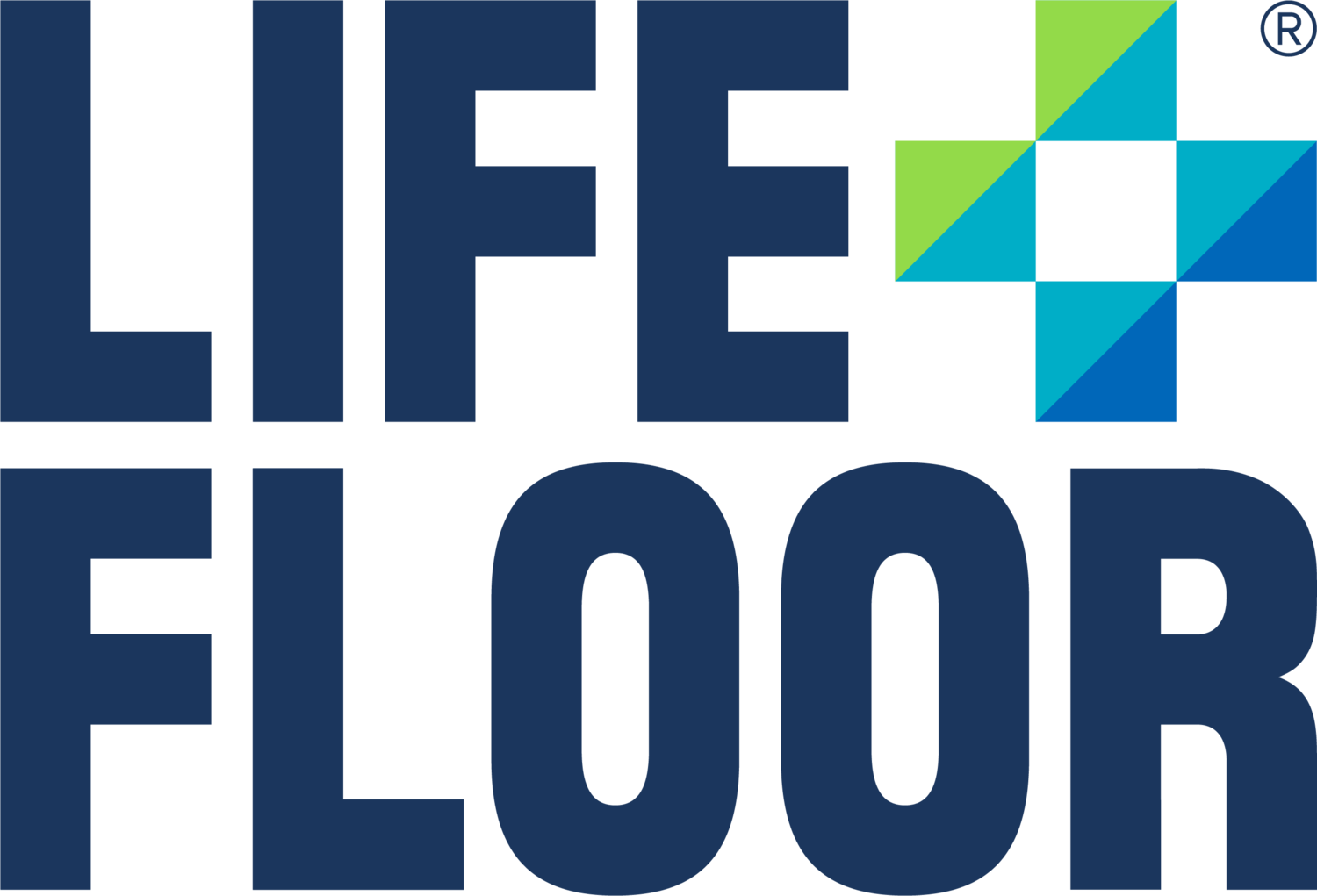Summer is here, and so is peak traffic season for aquatic facilities. While fun and foot traffic soar, so does the strain on your surfaces. For aquatic operators using Life Floor, a slip-resistant surface that thrives in wet environments, now is the time to double down on a smart, efficient cleaning strategy.
Life Floor is uniquely engineered from a foam-rubber material, which means cleaning it requires a different approach than traditional surfaces. With the right approach, you’ll not only maintain visual appeal and safety but also extend the life of your floor. Here’s how to handle the most common seasonal contaminants and keep your Life Floor in top condition.
Combat Surface Rust from Slide Towers and Fixtures
Problem: Rust stains frequently form where water runs off metal structures, such as slide towers or exposed hardware, especially in outdoor areas.
Solution: Use a mineral deposit remover (MDR) with 30–40% phosphoric acid, diluted appropriately (up to 1:5 for aggressive cleaning). Apply with a squeeze bottle, not a sprayer, and scrub using a medium-soft bristle deck brush. Never let the solution dry on the tile. Rinse thoroughly and follow with a degreaser to remove any remaining film.
Remove Calcium Deposits Near Ladders and in Standing Water
Problem: Hard water deposits—white, chalky buildup around ladders, drains, and any area with poor drainage.
Solution: These are alkaline deposits and respond best to acidic cleaners, such as peroxide or mineral deposit remover (MDR). In stubborn areas (often between tiles or where water collects), apply MDR directly, allow a short dwell time (2 minutes), scrub, and rinse thoroughly. Repeat if necessary for heavy buildup.
Manage Sunscreen and Lotion Buildup in High-Traffic Areas
Problem: Oils from spray-on sunscreen, tanning products, and lotions are tough on surfaces and attract additional debris.
Solution: Use a sodium-based degreaser at a stronger dilution (1:5) and clean every other week (or more frequently during high-traffic periods) with a floor scrubber or auto-scrubber. For best results, apply cleaner liberally, allow it to dwell, then scrub before recovering the cleaner and thoroughly rinsing the area.
Dealing with Chewing Gum on Life Floor
Problem: Chewing gum can quickly become an unsightly nuisance on pool decks, especially when it gets ground into the textured surface.
Solution: Start by applying ice to the gum to harden it. Once firm, gently lift it with a plastic scraper or putty knife; avoid anything sharp that could gouge the foam surface. For any remaining residue, apply WD-40 and gently scrub with a cloth until the gum is fully removed. Rinse the area thoroughly and follow with a degreaser cleaner to ensure no oily residue remains on the surface.
Spot Cleaning Strategy for Problem Areas
Tip: Not every part of your facility needs the same cleaner. Locker rooms and bathrooms are best maintained with peroxide-based cleaners, while decks with high food traffic or heavy sunscreen use benefit more from degreasers. For calcium and rust, the mineral deposit remover is your best friend.
Sample cleaning rotation for an outdoor aquatic area:
Week 1: Cleaner Degreaser
Week 2: Cleaner Degreaser
Week 3: Peroxide Cleaner
Spot clean as needed: Mineral deposit remover
Sample cleaning rotation for an indoor aquatic area:
Week 1: Peroxide Cleaner
Week 2: Peroxide Cleaner
Week 3: Cleaner Degreaser
Spot clean as needed: Mineral deposit remover
Repeat this schedule and adjust based on your traffic and trouble spots.
Avoid These Common Cleaning Mistakes
Never scrub Life Floor when dry or use stiff or metal brushes. They can damage the surface texture.
Rinse thoroughly after cleaning. If foam appears when spraying the floor, that’s a sign that cleaning products are still lingering.
Check your cleaner’s pH. Acidic soils require an alkaline degreaser; alkaline deposits require an acidic cleaner.
Don’t power wash unless absolutely necessary—and even then, use <800 PSI with a 20°+ fan tip and stand at least 12 inches from the floor.
Your Summer Cleaning Toolkit
Be sure to have these on hand:
Peroxide cleaner (pH 3.5–4.6)
Sodium-based degreaser (pH 12.5–13.5)
Phosphoric acid mineral deposit remover
Auto-scrubber or floor scrubber with turf pad or soft bristle brush
Wet vacuum or squeegee for recovery
Test kits or cloths for spot checks
Final Thoughts
Life Floor is built to withstand the demands of your busiest season, but it thrives with consistent, appropriate care. With the right tools and schedule in place, you can minimize downtime, maintain safety, and keep your facility looking its best all summer long.
Need help troubleshooting a tough stain?
Visit lifefloor.com/cleaning-life-floor or email the experts at solutions@lifefloor.com.







